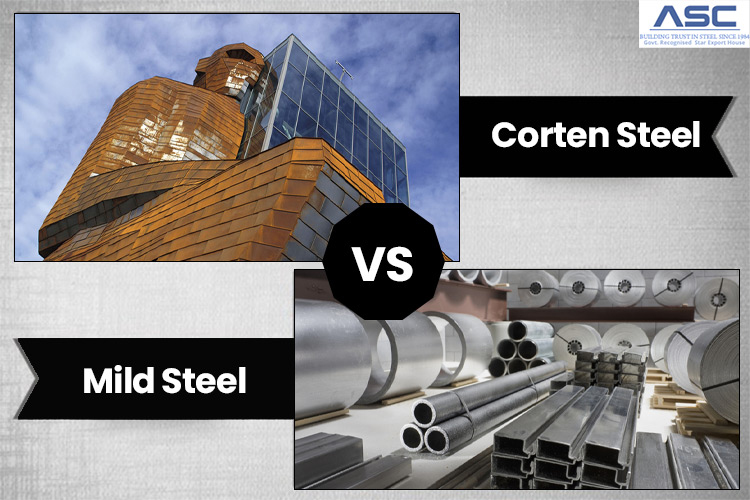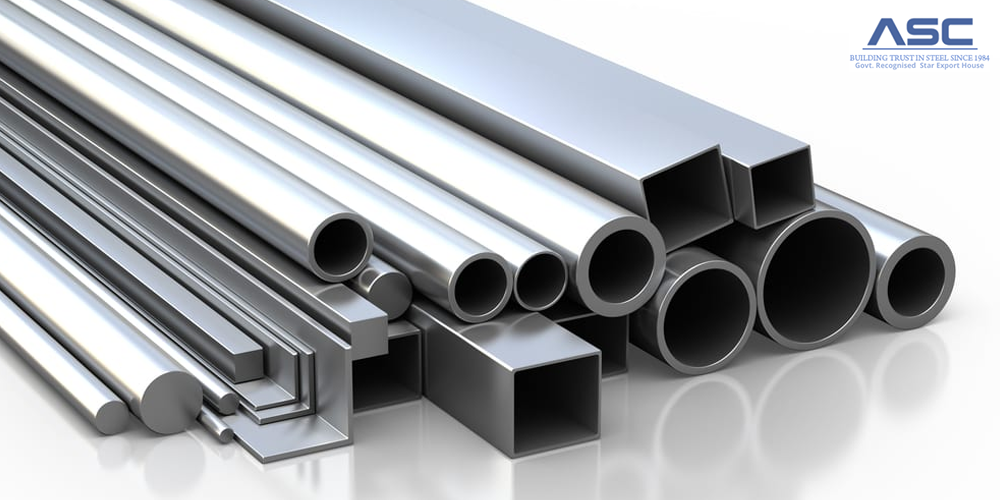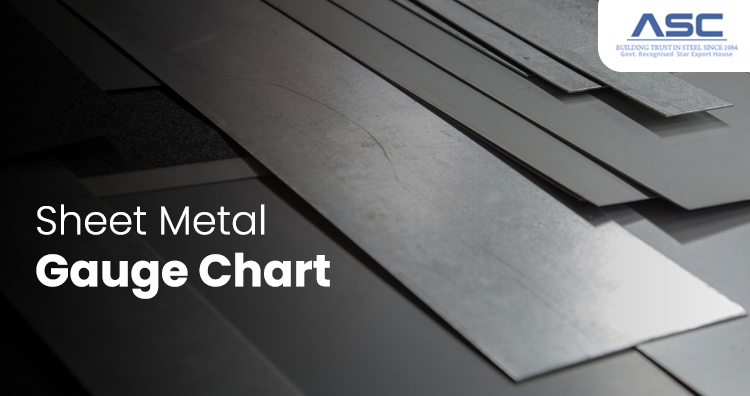Difference Between Corten Steel and Mild Steel
by AMC
Posted on November 24, 2022 at 04:52 PM

What is Mild Steel?
Mild steel, also known as carbon steel, is the most prevalent type of steel today. Mild steel is less
expensive and, once sealed, will keep a naturally rusty appearance. known as Penetrol. This
maintains the color and appearance of the rust. Low-carbon steel contains between 0.05 and 0.25
percent carbon, rendering it malleable and ductile. Carburizing can be used to increase the surface
hardness of mild steel, which has a relatively low tensile strength but is inexpensive and simple to
form.
It is frequently used when large quantities of steel are required, such as for structural purposes.
Mild steel has a density of approximately 7.85 g/cm3 (7,850 kg/m3 or 0.284 lb/in3)
The following chart shows the differences and characteristics of the three steel types:
|
Carbon content (wt. %) |
Microstructure |
Characteristics |
Examples |
|
|---|---|---|---|---|
|
Low-carbon steel (Mild steel) |
Less than 0.25 |
Pearlite, ferrite |
Soft, cheap, very ductile, easy to machine and weld |
AISI105, AISI 316L, Q195, Q215, Q235, 08F, 15Mn, 20Mn |
|
Medium-carbon steel |
0.25 to 0.60 |
Martensite |
Reasonably ductile, hard, strong and not easy to harden |
AISI 409, 45#, 40CR, 20CR, SCM 435 |
|
High-carbon steel (carbon tool steel) |
0.60 to 1.25 |
Pearlite |
Very hard, strong, unyielding, hard to machine and weld |
T7, T7A, T8Mn, T8MnA, AISI440C |
What is Corten Steel?
Corten steel (commonly abbreviated as Cor–Ten) is a weather-resistant steel that is more precisely
known as "Atmospheric Corrosion Resistant Steel." It is a steel alloy including copper and chromium;
this alloy is more resistant to atmospheric weathering than other unalloyed steels. Under the
influence of the weather, the steel produces a protective layer on its surface.
The unique distribution and concentration of alloying elements in the protective layer are
responsible for its corrosion-inhibiting properties. The surface-protecting layer forms and
regenerates continually under the influence of the elements. In other words, the steel is allowed to
rust so that a "protective" layer can form.
Chemical Properties of Mild Steel
| Chemical composition (Ideal analysis to meet the majority of grades listed above) |
|
|---|---|
| Carbon | 0.16-0.18% |
| Silicon | 0.40% max |
| Manganese | 0.70-0.90% |
| Sulphur | 0.040% Max |
| Phosphorus | 0.040% Max |
Chemical Properties of Corten Steel
| Content, % (ladle analysis) | ||||||||||
|---|---|---|---|---|---|---|---|---|---|---|
|
C (max) |
Si | Mn | P |
S (max) |
Al | V | Cu | Cr |
Ni (max) |
|
| Corten A | 0.12 | 0.25–0.75 | 0.20–0.50 | 0.07–0.15 | 0.030 | 0.015–0.06 | – | 0.25–0.55 | 0.50–1.25 | 0.65 |
| Corten B | 0.19 | 0.30–0.65 | 0.80–1.25 | 0.035 max. | 0.030 | 0.020–0.06 | 0.02–0.10 | 0.25–0.40 | 0.40–0.65 | 0.40 |
Mechanical Properties of Mild Steel
As shown in the chart above, mild steel has less carbon than other carbon steels. Mild steel contains
0.25 percent carbon.
Mild steel provides high impact strength, excellent ductility and weldability, and the ability to be
cold-formed. Due to these characteristics, mild steel is easier to CNC machine than other forms of
steel.
Mild steel has a relatively low tensile strength, which makes it more susceptible to breaking than
other steels.
Carburizing, a form of heat treatment, can be utilized to increase tensile strength. Carburizing is
a surface-hardening process in which mild steel is heated to a given temperature and then cooled,
which hardens the surface of the steel while leaving the core flexible and ductile.
Mechanical Properties of Corten Steel
The mechanical properties and thickness ranges of Corten steel are provided in the following table.
|
Thickness (mm) Strip Products |
Plate Products |
Yield strength minimum |
Tensile stength minimum |
Elongation miniumum |
|
|---|---|---|---|---|---|
| Corten A | 2 – 12 | 6 – 12 | 345 | 485 | 20 |
| Corten B | 2 – 13 | 6 – 40 | 345 | 485 | 19 |
Applications of Mild Steel

Use of mild steel is widespread. Examples of typical uses include hardware tools, cookware, medical
instruments, machinery, construction, and infrastructure.
1. Construction and infrastructure :-
Mild steel provides excellent tensile strength for use in construction frames. Mild steel meets
seismic and wind standards, is impervious to worms and insects, and is erodible and fire-retardant,
making it ideal for construction.
2. Machinery :-
Due to its high strength, ductility, and hardness, mild steel is favoured for the production of
machine accessories. Due to the low carbon content, the steel is machineable, cuttable, pressable,
moldable, and formable without breaking.
3. Cookware :-
Mild steel is preferred for making machine accessories because to its high strength, ductility, and
hardness. Due to the steel's low carbon content, it may be machined, cut, pressed, shaped, and
formed without breaking.
4. Pipelines :-
Due to the extreme ductility of mild steel, mild steel pipes are widely used in the production of
various types of pipes and poles. Mild steel could be utilized as a food-safe material, therefore
steel pipes are great for transporting water, beverages, and natural gas. As a result of their low
carbon content, outdoor pipes are resistant to rust and harsh weather. Mild steel pipes are much
more durable and environmentally friendly than plastic pipes. It can also be cut into a rectangular
shape.
Corten Steel Applications

1. Landscape and Garden Design:
There are many methods to shape and enhance an outdoor area using weathering steel, from landscape
edging to planter boxes. In fact, cor-ten was recently listed as a top trend in landscape design by
The Wall Street Journal.
2.Roofing and Siding:
Produced from ASTM
A606-4 and A588
, weathering steel corrugated and profile panels are widely used
to construct roofs and building facades. For instance, the Amardeep Steel Center building was
created out of cold-rolled weathering steel. The building’s exterior facade was constructed from
ASTM A606-4 corrugated and rib panels.
3.Sign Posts:
Corten Steel (Weathering steel)
sign posts are designed to endure 30 years longer than your
typical
steel posts since they develop the protective patina. Plus, they look amazing in natural
situations!
Weathering steel sign posts are typically used for traffic signs and vineyard end posts.
4.Security Solutions:
Gates, fences, and bollards are just some of the security applications where corten steel
shines.
The rusty patina that corten steel develops over time makes it an excellent choice for use in
playgrounds, parks, farms, and vineyards, among other outdoor settings.
5.Outdoor Sculptures:
These days, you're more likely to see sculptures made of weatherproof steel in public spaces.
corten steel is used by
numerous sculptors because of its durability, versatility, ease of fabrication,
and
aesthetic appeal.
Most Common Mild Steel Grades
Here are some of the most common grades of Mild steel. All of them and other metals like them
have the quality of being universal. Because of how they work, they are used in a wide range of
situations.
EN 1.0301
Equivalent grades: AISI 1008; C10; DC01
EN 1.0301 carbon steel contains 0.1% carbon, 0.4% manganese and 0.4 percent silicon. It also
contains small amounts of copper (Cu), nickel (Ni), chromium (Cr), aluminum (Al), and molybdenum
(Mo).
This grade is easy to weld and is often used for parts and shapes that are extruded, forged, cold
headed, or cold pressed. It is mostly used in car parts, furniture, and home appliances.
EN 1.1121
Equivalent grades: AISI 1010
EN 1.1121 carbon steel has between 0.08% and 0.13% carbon in it. Manganese is found in amounts
between 0.3% and 0.6%. It is used to make bolts and screws with cold-headed heads.
This grade is also easy to shape and bend, and it can be shaped using traditional techniques. It
also works with all kinds of welding techniques. Heat treatment, quenching, and tempering can be
used to make it stronger, but these steps are expensive to do.
It is a general-purpose steel that is used a lot in buildings and the car industry.
EN 1.0402
Equivalent grades: AISI 1020; C22
This type of steel is very easy to weld. EN 1.0402 is especially good for parts that will be
carburized. It is also a good mix of being flexible, strong, and tough.
It has between 0.18% and 0.23% carbon and between 0.3% and 0.6% manganese. Compared to EN 1.1121, it
is not used as much, but in its as-forged state, it is very easy to machine.
This grade is used to make hydraulic parts and camshafts for machines.
Most Common Corten Steel Grades
Corten A : -
This version contains added phosphorus making it more suitable for flue gas applications.
Corten A
is not recommended for heavy-load bearing applications as the added phosphorus reduces its
tensile strength.
Corten B : -
Corten B
is used more often than the other type.
It is the one that forms the rust coating and keeps a high level of tensile strength while still
being pliable enough to weld.
Corten B is great for steel parts that will be used in heavy, load-bearing structures outside in
harsh conditions.
Your metal manufacturer will help you decide which of the two versions is best for your project
based on your specific needs.
Advantages of Corten Steel
1.Little to No Painting
The patina that forms on corten weathering steel makes it less likely that it needs paint, and in
most cases, it doesn't even need paint.
This not only saves money on maintenance and materials, but it also keeps you from using some
paints' dangerous and volatile chemicals.
2.Strong and Durable Material
Corten's (Corten B) high tensile strength and durability make it a good choice for heavy-duty
structures that carry a lot of weight.
Traditional steel is four to eight times less strong than weathering steel.
3.Attractive Rustic Appearance
The reddish-brown rust that naturally forms on its surface makes it a popular choice among
architects and design engineers who work on artistic and modern structures and applications.
4.Very Little Upkeep and Maintenance
Because of the way it is made, corten steel can stand up to wet, humid, and hot conditions that
would damage other types of steel.
Corten's melting point is around 1450-1510 degrees Celsius.
Corten weathering steel can be used to make structures that will last for a long time. There is
little to no maintenance needed, so less money is spent on upkeep.
5.Environmentally Compliant and Friendly
It still meets most building standards and codes because it is made of eco-friendly materials that
are 100% recyclable.
So, it's a good choice for people who want to build with materials that are good for the
environment.
Advantages of Mild Steel
1.Strength to Weight Ratio
Mild steel is one of the lighter metals you can use. It is lighter than other grades of carbon steel
and most other types of steel. This is because the main thing that affects the weight of these
metals is how much carbon they have.
Even though it is lighter, its strength-to-weight ratio is still very good. It is a strong and tough
metal. This makes it a reliable steel for making things out of metal and a much easier material to
work with when making things.
2. Weldable
One of the best things about mild steel products is that they can be welded. Mild steel is easier
and faster to weld than other types of carbon steel. This is because mild steel is an easy metal for
electric currents to move through without changing the metal's "make-up."
This is a problem with some other kinds of steel, like stainless steel. When it comes to welding,
these materials may need special techniques, but mild steel can be worked with much more simply and
for less money. This makes it easy to work with during the making process.
3.Favorable Chemical Properties
Mild steel can be made with many different things besides iron and carbon. No matter what
combination manufacturers choose, it will change the chemical properties of the steel and make it
better for some uses than others.
Mild steels often have chromium, manganese, sulfur, phosphorus, copper, and cobalt added to them.
Each one can make some chemical properties stronger. The main goal of alloying is to make something
stronger against heat, corrosion, and wear.
For example, mild steel that has more chromium makes it harder and less likely to rust. This is
great for uses where the metal can stand up to air and water without getting rusty. Copper is
another element that can be used to make mild steel stronger. It has a similar effect on mild steel
and is often used to make pipes and tubes.
4.Ductile
The ability of a metal to be stretched and bent in a plastic way is measured by its ductility. For
the metal to be ductile, it needs to be able to do this without breaking. For a metal to be
considered ductile, it should be able to be deformed around 15% without breaking. After that, it
can't go back to its original shape.
Mild steel is one of the more malleable metals you can use for your project in this way. Even when a
fairly large force is put on it, it can bend and stretch without becoming permanently changed. They
are easy to shape, bend, and weld because of this quality.
5. Cost-effective
Mild steel is one of the steel grades that costs the least. This makes it a cheap way to make things
that people use every day, like car frames, steel pipes, and even cookware.
It costs much less than other kinds of steel because it has a low amount of carbon. So, if you have
a smaller budget, mild steel might be the best option for you. When a lot of this metal is needed,
it can be made quickly and cheaply in large quantities, unlike other steel products.
Extra treatment is one of the few things you have to think about when figuring out how much it will
cost. For some uses, mild steel needs to be galvanized or heat-treated to make it less likely to
rust. Even so, it is usually cheaper than other materials.
Conclusion
The best thing about Corten weathering steel is that it doesn't rust in the weather.
The protective layer of rust that forms on its surface when it is exposed to the elements is the
cause of these qualities.
In addition to being able to rust, it also has a high level of tensile strength, can be welded, and
can be machined.
That makes it a good choice for big building and construction projects outside.
Artists, sculptors, architects, and design engineers who need a natural-looking material for their
work like the way it looks old and worn.
Corten steel is the best choice if you want a material that doesn't rust, has high strength, is
flexible, is easy on the eyes, doesn't need a lot of care and maintenance, and is friendly to the
environment and meets all the rules.
Mild steel, also called low-carbon steel, has less than 0.25 parts per million of carbon. Mild steel
is used in almost every industry because of how it works. CNC machining is a common way to make
prototypes or low-volume production-quality parts out of mild steel. Metal injection molding is a
better way to make larger amounts.
Amardeep is a professional prototype and low-volume production service. They have many years of
experience and know how to machine different kinds of carbon steel, Corten steel, stainless steel,
alloy steel, etc.

Benefits & Rusting Capabilities of Corten Steel
Corten steel commonly known as weathering steel, is highly resistant to rusting and pitting when exposed to the elements. In order to preserve itself, this steel forms an oxide coating.

